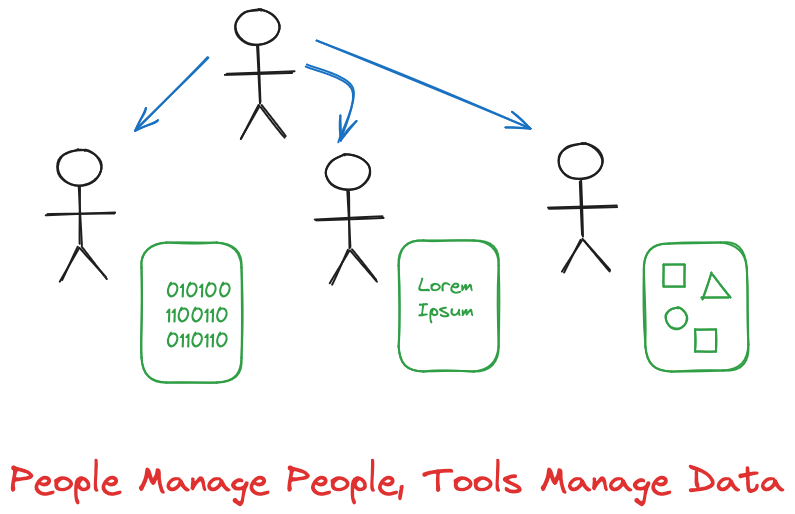“People Manage People, Tools Manage Data” is a very good rule of thumb for guiding your sales and implementation efforts for a new system.
People Manage People, Tools Manage Data
This was a principle for systems design suggested in a talk I heard 15-20 years ago. I can no longer remember the speaker’s name but I remember that he was in the disk drive business. Google has proven unavailing in sourcing it so it was probably an original insight with this engineer that hasn’t gained wider currency.
It should. People Manage People, Tools Manage Data
The key message is that people are responsible for managing other people, building relationships, fostering communication, and making decisions. On the other hand, tools are meant to manage data, assist in analysis, and streamline processes, but not replace human judgment or interaction.
An example from Cisco
When I went back to Cisco for my second tour of duty in 1998 (I had been there from 1990 to 1994; the second time I was able to last until mid-2003 before I went back to being an entrepreneur) I was surprised at the number of workflow systems that were being designed and deployed to limit input and decrease options that could be requested. People were instructing IT to design interfaces that would do things they would never be so rude to do face to face, in e-mail, or over the phone. The designers were always surprised when they (or their management chain) continued to get e-mail and phone calls because people wouldn’t limit themselves to the options on the web form.
These were workflow systems and request tracking systems for what had been negotiations. So what’s my point? Anytime you set out to manage employees, partners, or customers with inflexible systems to channel their activities don’t be surprised when it doesn’t quite work out like you planned.
Balance efficiency, coordination costs, relationships, and creativity
I am a huge fan of defect tracking systems, source code management systems, and any tool that allows you to get a better handle on the data thrown off by your actions. But be careful of trying to use software to “manage people.”
Winston Churchill observed that “We shape our buildings, and forever afterwards our buildings shape us.” So it is with our internal control and score keeping mechanisms. Be careful not to abdicate your responsibilities here.
Update Thu-Sep-5-2024: I was supporting a client who offers practice management tools for a specialty vertical on a sales call earlier this week. The prospect–who has 20 professionals on the team–had not yet converged onto a standard approach with defined quality assurance steps and common templates. I was reminded of this rule of thumb: “people manage people and tools manage data.” You have to commit to a methodology and standardize your approach and related process and procedures before you can automate it. If a team has a working consensus on process then adding tools is straightforward, if they don’t have a rough agreement then a lot of arguments about tools are really arguments about goals, roles, or process that need to be hashed out before trying to automate.
Related Blog Posts
- Tools vs. Methods vs. Policies
- The Best Feedback From Your Early Customers Is a Story
- Don’t Practice Veterinary Marketing: Talk to Prospects
- Connecting Technical Know-How With Customer Needs
- Appreciative Inquiry Mindset is Essential to Customer Discovery
Image Credit: “People Manage People, Tools Manage Data” (c) 2024 SKMurphy, Inc. All Rights Reserved
This post was republished at https://www.linkedin.com/pulse/people-manage-tools-data-sean-murphy-uf9oc

